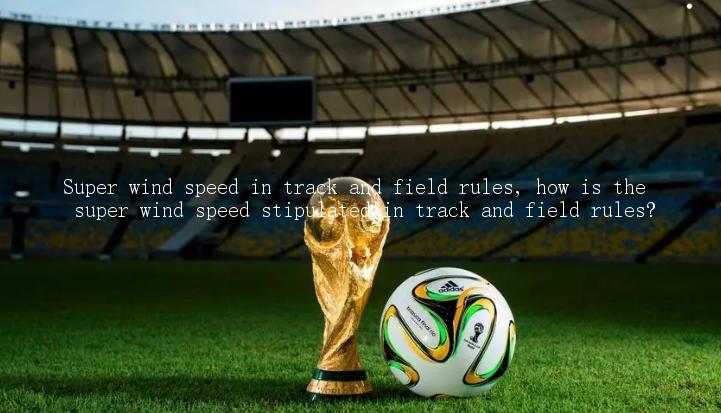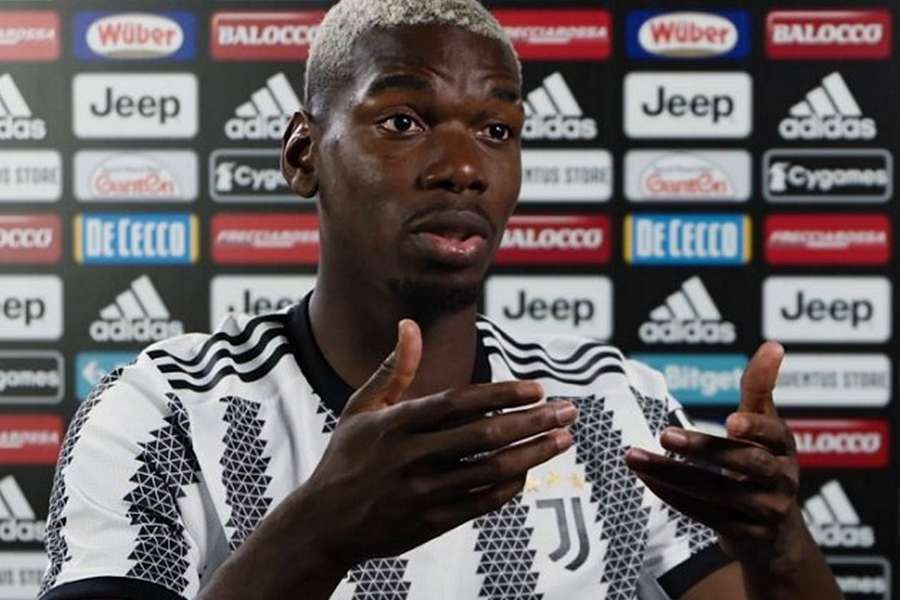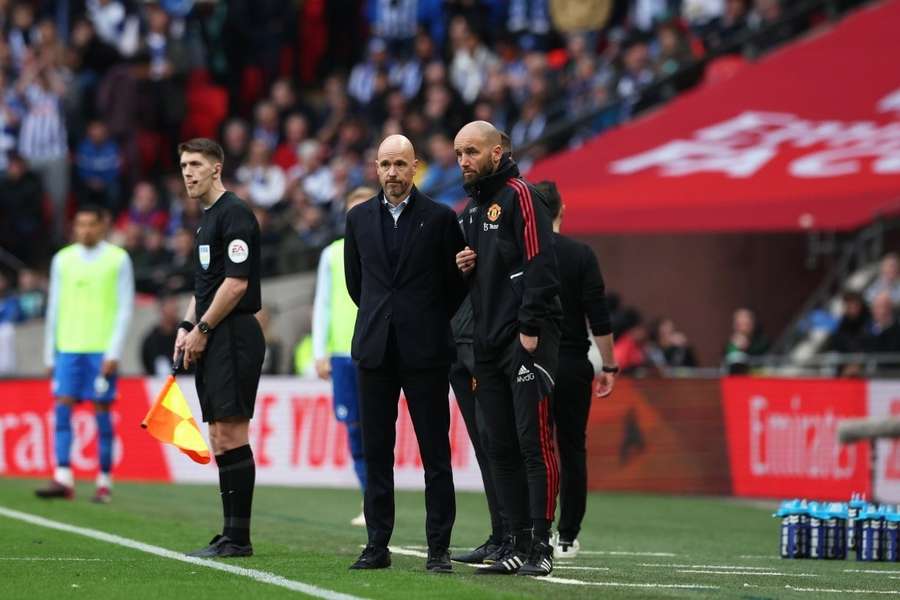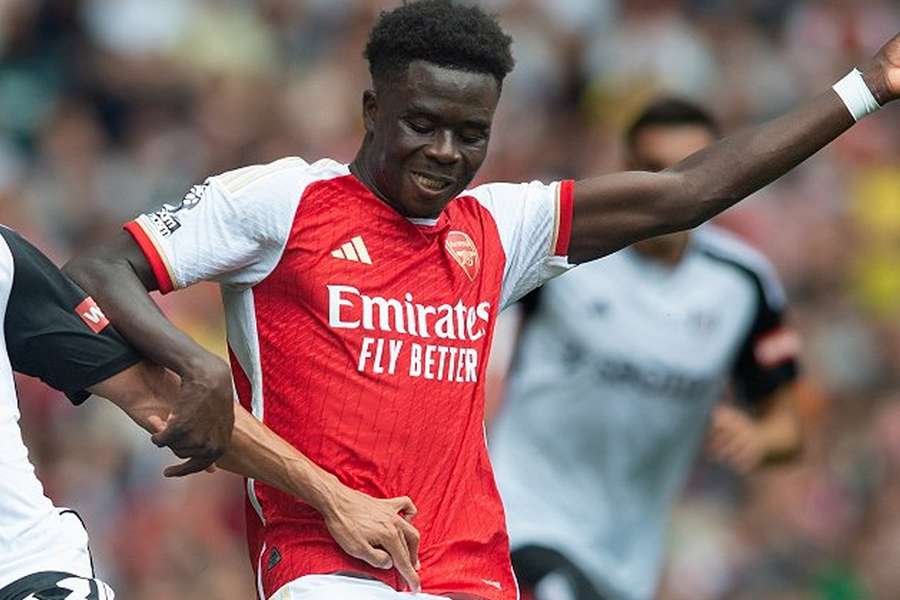U20 Women's World Cup in Colombia: Record-breaking attendance & unexpected champions - recap by expert Tim Grainey
Edit the content
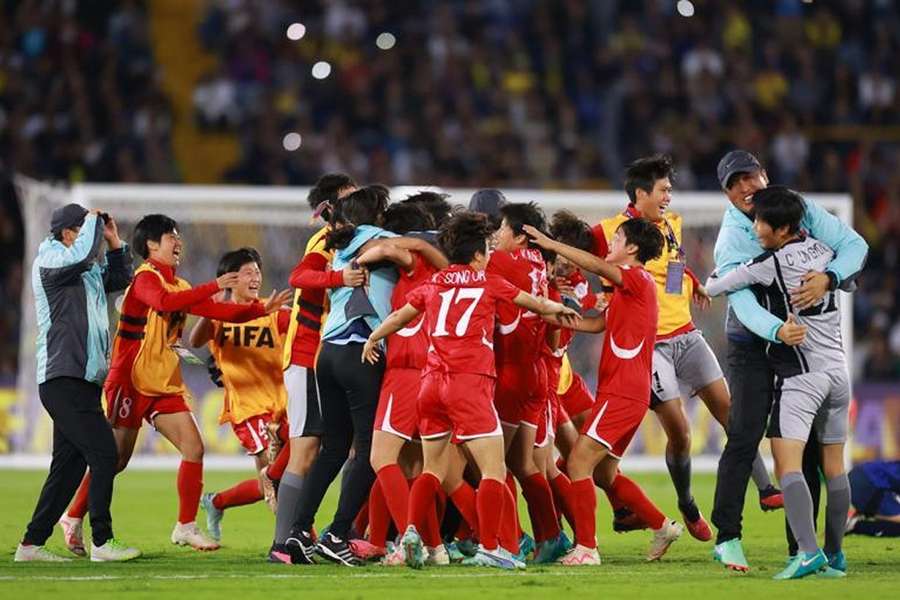 This week we look at the results and some key takeaways from the 2024 U-20 Women’s World Cup in Colombia in September, which had some outstanding games and large crowds in the South American nation, which is a good sign ahead of the next Women’s World Cup in Brazil in 2027.AdvertisementAdvertisement
This week we look at the results and some key takeaways from the 2024 U-20 Women’s World Cup in Colombia in September, which had some outstanding games and large crowds in the South American nation, which is a good sign ahead of the next Women’s World Cup in Brazil in 2027.AdvertisementAdvertisementKorea DPR wins the U-20 WWC title in Colombia
Colombia hosted the 11th edition of the FIFA U-20 Women’s World Cup, arguably the most important global women’s football event after the senior Women’s World Cup and more impactful long-term that the Olympic Games Finals (see: The Week in Women's Football: Olympics review; is it the end?; Marsch intervention in Canada drone storm - TribalFootball.com). This tournament expanded to 24 teams from 16 teams for the first time in 2024. The biennial competition began as the FIFA U-19 Women’s World Championship in 2002 in Canada and was held as a U-19 event in 2004 before moving to its current Under-20 format in 2006. In Colombia, the games were held in Colombia in three cities and four stadiums: Bogotá’s El Campin Stadium (Capacity: 35,129) and El Techo Stadium (Capacity: 7,707), Cali’s Pascual Guerrero Stadium (Capacity: 37,000) and Medellin’s Atanasio Girardot Stadium (Capacity: 44,826).
Some key takeaways of the 2024 U-20 WWC
Korea DPR won its third Women’s World Cup in 2024. Korea DPR took the title in 2019--they also won titles in Russia in 2006 and Papua New Guinea in 2016—by defeating Japan 1-0 in the final in front of a tremendous crowd of 32, 908 in Bogota, particularly for a final between two AFC sides. The FIFA U-20 Final was a repeat of the U-20 AFC Regional Finals in Tashkent, Uzbekistan, where Korea DPR bested Japan 2-1 in March of 2024.
We have seen success before from this age-level national side from the Hermit Kingdom and the key question is when will they transfer it to the senior level, where in three Women’s World Cup Finals they have advanced from the Group Stage only once, in 2007 in China when this reporter saw two of their games (falling to Germany 3-0 in the Quarterfinals)—they were eliminated at the Group Stage in the U.S. in 2003 and in Germany in 2011. Korea DPR’s senior WNT has missed the last three Women’s World Cup Finals but qualifying for Brazil 2027 and advancing from the Group Stage should be realistic goals if they build around this fantastic U-20 team, with their Golden Ball and Golden Boot player Choe Il-son (17) a tremendous talent to build around.
An advantage for the winners is that Korea DPR’s U-20 team would spend months training together at camps whereas other teams’ players were tied to club teams/colleges in other countries. I have no complaints there as the DPR domestic women’s league is not covered much and is of a largely unknown quality. We have seen national teams operating as club teams—U.S. and Canada have done it at the senior level in the past—but my question is how does Korea DPR translate this success to being competitive at the senior level?
In Colombia, Korea DPR was a stellar team to watch; they closed down opponents and intercepted balls without going to ground or fouling excessively. They also played with a calmness and poise that we haven’t seen often from a lot of teams at this level. They were purposeful and utilized their team speed well with quick breaks from deep in their own half, as 4 to 5 players broke out at once and overwhelmed their opponents’ defense. Their fitness levels were outstanding; clearly convening for up to three months at a time for camps at home or abroad, was effective. At the senior level, Korea DPR can certainly sequester their national team for long periods but at what cost to their twelve team local league, for which we have little information on, but it’s safe to say that it is not one of the top global leagues.
The domestic league is a barrier to overcome for senior WWC improvement as the players don’t advance technically and tactically by not playing regularly against players from senior national sides from Asia, Europe or the Americas, who have the benefit of playing in competitive full national leagues. Perhaps an approach for Korea DPR to consider is to send some of their top players to a league in another country, as we saw last month in which four Iranian national team players were with Pyunik of Armenia during the 2024-25 WCL season. With Korea DPR’s limited links with many countries around the world, likely prospects would include China’s league or perhaps Russia, which is still going well despite FIFA’s sanctions and has an American still playing with Dynamo Moscow in her fourth year in the country.
Korea DPR head coach Ri Song-ho (53), who was a player but turned to coaching after a serious injury early in his career, has been in charge of the U-20 WNT since last year, after coaching Wolmido FC in the 12 team Korean DPR Women’s Premier League.
He told FIFA.com during the tournament: “If I consider the strengths of our team, it’s that we have flexibility so that we can match our opponent’s strategy. In some matches we will look to switch the play, with good crossing and finishing. But if we face a different team that plays different ways then we can create strategies to deal with those threats….but it’s all about flexibility.”
Ri sees that women’s football will continue to be prioritized at the highest levels at home: “Women’s football is a highly promising sport in our country and the government is focusing on the development of women’s football. From that perspective, perhaps our condition is much better, comparatively, than other countries so we have a lot of benefits from that aspect.”
The key is to translate that potential to the full national team ahead of the 2027 WWC regional qualifying and Final tournament in Brazil.

Colombia’s Defeat in the Quarterfinals Negatively Impacts Tournament Attendances Colombia’s somewhat surprising defeat in the Quarterfinals—losing on penalties 3-0 after a 2-2 tie when they were ahead 2-1 late in the second half and were every bit the match of Netherlands—did impact the attendances some for the last four games, but overall, the Colombia Football Federation did a very good job of staging this tournament. The Colombian team was certainly engaging to watch and Colombian players are quite popular now with clubs throughout Europe and North America; the country is definitely in a purple patch for women’s football. They should continue to be a force in their home continent in three years’ time at the senior WWC in Brazil, after making the quarterfinals for the first time in 2023.
The tournament total attendance was 375,841 (7,228 per match) for 52 games. In the first round the games were doubleheaders but Colombia attracted double the number of the other two matches, with 32,127 at the opener against Australia (2-0), 30,644 for the 1-0 win over Cameroon—both in Bogota—and 35,837 for the 1-0 win in Medellin, with only 3,035 going to see Australia vs. Cameroon that same day in Bogota.
The 35,837 crowd in Medellin was the largest crowd at the U-20 finals (which was broken at the Quarterfinal stage) since the tournament's rebrand from the U-19 Women’s World Championships in 2006. The overall record still belongs to the 2002 U-19 Women’s World Championship final, when 47,784 turned out in Edmonton as Canada lost to the U.S. 1-0 in overtime, but lit a fire in the country for support of women’s national teams’ football that still burns brightly today.
In the knockout rounds, 35,256 saw Colombia dispatch South Korea 1-0 in the Round of 16 and then a tournament high crowd of 37,382 saw the home nation’s quarterfinal defeat on penalties against Netherlands, with both games held in Cali. At the other end of the attendance table, in Group B, Fiji drew a crowd (sic) of only 697 for their 9-0 defeat to Canada and 434 for their 11-0 shellacking by France, both in Medellin.
The U.S. Exceeded Expectations from their Recent Past and their Stunning Comeback in the Quarterfinals against Germany was a Seminal Moment in the Tournament’s History.
In the Quarterfinal against Germany, the U.S. was seemingly out of the tournament as Germany scored a second goal in the 92nd minute to take 2-0 lead. The Americans proved the popular saying among coaches that a 2-0 lead is the most dangerous lead to have as they then scored two goals in the last two minutes of injury time to tie the game at 2-2. The U.S. then won on penalty kicks 3-0 to seal the iconic win in a game which was a tremendous advertisement for this age level. The U.S. had been knocked out at the Group Stage in the last two tournaments at the U-20 level and at the U-17 level—later this fall in the Dominican Republic—the U.S. finished second in the first tournament in 2008 and then were eliminated from the Group Stage on three occasions, missed the tournament completely in two tournaments and made the Quarterfinals at the last tournament in 2022 in India.
The Americans ultimately took the Bronze Medal, but it was still was quite a revival for the U.S. youth national teams which had struggled for some years. This third place finish, along with the U.S.’s Olympic Gold Medal this summer under new coach Emma Hayes, shows that the U.S. should be among the favorites for the 2027 Women’s World Cup in Brazil.
The U.S. team had 8 professionals in the NWSL (all rookies), along with 12 in college and one high schooler. The Americans had the most professionals of any team in Finals and that was probably a critical difference in the making the final four.
Defending champions Spain were knocked out at the Quarterfinal Stage
Spain was knocked out of the tournament against Japan (1-0 in 120 minutes)—who went on to be the ultimate runner-up in 2024. The two teams battled in the last two Championships Finals in 2022 and 2018 (as the 2020 U-20 WWC was cancelled due to COVID); Spain lost to Japan 3-1 in 2018 in France and then defeated Japan by the same score in 2022 in Costa Rica. As expected, Spain was a good side, and as always, a pleasure to watch but needed more scoring—as they had 7 goals with 2 allowed in 5 games—which was a common theme in this generally low scoring tournament—except for the Fiji games (see below).
Overall, losing to perennial finalists Japan should not be something to fret over, as long as the Spanish Football Federation supports women’s football in progressive ways and cleans up their administration (and coaching program) of those with medieval attitudes towards women—which is not necessarily a given for a Federation that has been fighting with their women’s national team players for some years now over pay, financial support and equal treatment. This column has chronicled the disputes—including instances of downright servitude at times, which blew up at the 2023 WWC Final in Sydney and continued through the 2023-24 UEFA Nations League—but, despite the turmoil, Spain triumphed in both tournaments. Spain—which finished in seventh place in this tournament and fourth in the Olympics— might have had their shine diminished a bit after they entered the summer by holding the senior WWC, U-20, U-17 and UEFA Nations League titles. However, they should not be underestimated as they are supremely talented and driven; they remain the favorites for the 2025 Women’s EURO and 2027 WWC in Brazil
Tournament Results Summary
In Group A, Colombia finished top with 3 wins for 9 points, shutting out Mexico (4 points), Cameroon (4 points) and Australia (0 points), though they only scored four goals in the process. Colombia became the seventh host nation to advance from the group stage at the finals. Thailand in 2004, Chile in 2008, Papua New Guinea in 2016 and Costa Rica in 2022 are the only host nations not to have made it to the knockout stage.
In Group B, Brazil also won all three matches to finish with 9 points, over France (4 points), Canada (4 points) and Fiji (0 points). It was a tough introduction to the world stage for the Fijians, who did not score and gave up 29 goals—losing to France 11-0 in their final match on September 6 and earlier to Canada and Brazil by identical 9-0 scorelines. France’s 11-0 victory over Fiji set a record for the most goals ever scored by a team in a U-20 Finals game, as well as the tournament’s biggest ever victory. It also became the highest-scoring game in tournament history, breaking the record set by Germany’s 9-1 win over Mexico in Russia in 2006, and equaled by Germany’s 5-5 draw with China PR in Canada in 2014. (See more on Fiji’s 15-year-old American goalkeeper below).
In Group C, Spain won all three games for 9 points but only scored five goals, with the U.S. second on 6 points, Paraguay third on 3 points, and Morocco fourth with 0 points. The U.S. lost to Spain 1-0 in the opening match, which was the crucial game of this group.
In Group D, Germany tied Nigeria at the top with 6 points but Germany took first place with a slightly better goal difference (+4 vs. +3), with Korea Republic third on 4 points and Venezuela was fourth with 1 point.
In Group E, Japan won all three games for 9 points, with Austria second on 6 points, Ghana was third on 3 points and New Zealand finished bottom with 0 points, scoring twice but surrendering 13 goals.
In Group F, Korea DPR finished top with 9 points, scoring 17 goals with 2 against, with Netherlands and Argentina tied for second on four points (with the Dutch having a better goal difference of 0 vs. -3) and Costa Rica finished with 0 points. Argentina came back from their 6-2 opening defeat to Korea DPR to qualify for the knockout stage for the first time in four U-20 tournaments.
In order to the make the Round of 16, four points were required as the four teams with four—Canada, Cameroon, South Korea and Argentina—all advanced, while the two teams tied with three points—Ghana and Portugal—both missed out.
In the round of 16, an exciting CONCACAF derby saw the U.S. defeat Mexico 3-2. This was a rematch of the CONCACAF U-20 Championship final that Mexico won 2-1 last year in the Dominican Republic. In Bogota, the Mexicans tied the game twice after the Americans scored through Princeton University striker Pietra Tordin (who led the U.S. in the tournament with four goals) and the Utah Royals’s Ally Sentnor to send the game into overtime. Jordynn Dudley, an 87th-minute substitute who won a College Cup last season with Florida State University as a freshman, scored in the 7th minute of overtime after showing impressive dribble skills prior to her shot.
Netherlands and Brazil also needed extra time to dispatch France (2-1) and Cameroon, (3-1), respectively. Reigning champions Spain (2-1) and host Colombia (1-0)—over Canada and Korea Republic, respectively—had one goal wins, though both were more comfortable victories than the scores suggested. The other two Asian Football Federation sides both advanced as Japan defeated Nigeria 2-1 and Korea DPR blasted Austria 5-2. Germany had a sizable win 5-1 over Argentina.
In the Quarterfinals, the U.S. stunned Germany with two goals within 85 seconds very late in second half injury time—both coming beyond the originally allocated eight minutes by the referee. Soccer America called it “A Comeback for the Ages,” in a game that was close to 130 minutes with added time—fortunately for the Americans who needed every second. Substitute Jordynn Dudley and captain Ally Sentnor scored the two stunning goals. In the 98th minute.
Ally Lemos of the Orlando Pride sent a high ball from midfield that Dudley was able to collect and then slid the ball past German goalkeeper Rebecca Adamczyk (19), who plays with Freiburg, into the lower left corner of the net. The U.S. scored again less than 90 seconds later to tie the game when another speedy substitute, Maddie Dahlien, dribbled through the right side of the penalty area, beat her defender and then hit a cross that ricocheted off the bottom of a defender’s foot and bounced up toward the near post where Sentnor beat Adamczyk to the ball and knocked it in with her right knee and through the legs of defender Jella Veit (19) of Eintracht Frankfurt. Sentnor’s goal was later changed to a German own goal so she finished with 11 U-20 national teams’ goals in total and three in two U-20 finals, as she also had a goal in the 2022 FIFA U-20 Women’s World Cup in India.
In penalty kicks Sentnor, Riley Jackson and Leah Klenke all scored for the U.S. while Germany’s Paulina Platner (18) of SGS Essen missed wide left and captain Vanessa Diehm (20) of Hoffenheim hit the woodwork. Goalkeeper Teagan Wy stopped Alara Sehitler (17), who is in her second season with Bayern Munich, with a right-handed save and the U.S. was most improbably into the semifinals.
In the other quarterfinals, Korea DPR beat Brazil 1-0 while Spain lost 1-0 to Japan in 120 minutes. In yet another stirring game that went to penalties, Netherlands knocked a very impressive host side Colombia out of the tournament after a 2-2 tie, as the Dutch advanced on penalties 3-0.
In the semifinals, Korea DPR defeated the U.S. 1-0 and Japan bested the Netherlands 2-0 to make the final, for an all Asian Football Federation (even East Asian Football Federation colleagues) Final. The American, who had to play 120 minutes in both of their previous games, were facing a fresher Korean DPR side that had been playing quite well throughout the tournament and had won each of its five previous World Cup matches in 90 minutes, while outscoring its opponents by a 23-4 margin. In the 22nd minute Choe Il Son scored her fifth goal of the tournament—she finished top of the goal scorers race with six goals after the Final.
The Koreans cut through the U.S. defense with two vertical passes, including a pass from Kim Song Gyong to Kim Song Ok, who used an inspired one-touch through ball to Choe, who took two touches to her left and scored inside the right post in front of 5,439 fans on a blistering hot day in Cali. The possession battle was nearly even but the USA only managed seven shots (three on target) compared to Korea DPR’s 18, many of which were from distance as the Asian champions put just five on target. Korea DPR had a 12-3 advantage in corners
In the third place match, it was back to overtime for the Americans as they defeated the Netherlands 2-1 with the Dutch putting the ball through their own net in the 119th minute from heavy American pressure. This was the Americans best finish in the past five U-20 Women’s World Cups, dating back to their third and most recent title in 2012—they also took third in 2014 in Thailand. Forward Maddie Dahlien, whose speed changed games off the bench throughout the tournament (she came on as a sub in all seven games), forced the goal when her shot deflected off of a Netherlands defender into the net. U.S. outshot Netherlands 26-11 and forced Dutch goalkeeper Femke Liefting into seven saves, several of them quite difficult.
In the Final, Korea DPR won 1-0 with an early goal in the 15th minute by Choe Il-son and their stellar passing game and defense held off Japan for the rest of the game. Having watched many games of this tournament, this reporter felt that the Korea DPR team was a cut above the other teams with their technique, speed and calm poise. Three teams have now won a trio U-20 titles: the U.S., Germany and Korea DPR, while Japan (2018) along with Spain (2022) in Costa Rica have each won once.
For the awards at the end of the tournament, it was no surprise that 17-year-old Korean DPR star Choe Il-son won the Golden Ball as the best player while NWSL players took the Silver (Japan’s Manaka Matsukubo of the North Carolina Courage) and Bronze Ball (American Ally Sentnor of the Utah Royals). Choe Il-son, who plays at home with Korea DPR league side April 25, also took the Golden Boot with six goals, followed by Vendito (Brazil—Ferroviária) and Maya Hijikata (Japan—Cerezo Osaka Yanmar), who both finished with five goals. Femke Liefting of the Netherlands and local side AZ won the Golden Glove as the Best Goalkeeper in the tournament.
U.S. Roster and stats ahead of the third-place game versus Netherlands:
2024 FIFA U.S. U-20 Women’s World Cup Roster by Position (College or Club; Hometown; U-20 Caps/Goals)
GOALKEEPERS (3): Caroline Birkel (St. Louis Scott Gallagher; St. Louis, Mo.; 0), Mackenzie Gress (Penn State; Lyndhurst, N.J.; 5), Teagan Wy (California; Rancho Santa Margarita, Calif.; 14)
DEFENDERS (6): Jordyn Bugg (Seattle Reign; El Cajon, Calif.; 10/1), Elise Evans (Stanford; Redwood City, Calif.; 16/0), Heather Gilchrist (Florida State, Boulder, Colo.; 11/0), Savy King (Bay FC; West Hills, Calif.; 18/0), Leah Klenke (Notre Dame; Houston, Texas; 17/0), Gisele Thompson (Angel City FC; Studio City, Calif.; 13/2)
MIDFIELDERS (6): Addison Halpern (PDA; Middlesex, N.J.; 0/0), Claire Hutton (Kansas City Current; Bethlehem, N.Y.; 9/0), Riley Jackson (North Carolina Courage; Roswell, Ga.; 14/1), Ally Lemos (Orlando Pride; Glendora, Calif.; 18/1), Yuna McCormack (Virginia; Mill Valley, Calif.; 8/2), Taylor Suarez (Florida State; Charlotte, N.C.; 14/1)
FORWARDS (6): Emeri Adames (Seattle Reign; Red Oak, Texas; 12/1), Maddie Dahlien (North Carolina; Edina, Minn.; 14/6), Jordynn Dudley (Florida State; Milton, Ga.; 13/5), Giana Riley (Florida State; Manteca, Calif.; 11/1), Ally Sentnor (Utah Royals; Hanson, Mass.; 22/12), Pietra Tordin (Princeton; Miami, Fla.; 13/6)
English native U.S. U-20 head coach Tracey Kevins will now leave her position, after coaching in the last two U-20 finals. She previously led the U-17 women’s national team side. She was also been the head coach for the U-17 and U-19 England Women’s National Teams during tournaments and training camps. She was an assistant coach for the England team that finished second at the 2007 U-19 Women’s Euros.
She was also an assistant coach for England at the 2008 FIFA U-20 Women’s World Cup in Chile. She graduated with a degree in Physical Education and Sport Science at St. Mary’s University College in Twickenham. She is moving into a new position at the federation as the Head of Development for the U.S. Women’s Youth National Teams (Technical & Leadership), and a new U-20 WYNT head coach will be appointed soon.
Looking at the 24 Finals team’s rosters, the following used all domestic-based players on their 21 player rosters: France, Korea DPR, Netherlands and the U.S.. The champions Korea DPR roster, drawn from six clubs, was:
Korea DPR 2024 FIFA U-20 Women’s World Cup Roster by Position (Club)
GOALKEEPERS (3): 1-HYON Son Gyong (April 25 SC), 18-GK PAK Su Mi (Sobaeksu SC), 21-CHAE Un Gyong (Pyongyang City SC)
DEFENDERS (5): 2-RI Su Yang (April 25 SC), 3-HAN Hong Ryon (Wolmido SC), 5-OH Sol Song (Sobaeksu SC), 6-KIM Kang Mi (Amrokgang SC), 16-PAK Hyo Son (Naegohyang Women’s FC)
MIDFIELDERS (8): 8-CHOE Song Gyong (April 25 SC), 9-KIM Song Gyong (Amrokgang SC), 11-HAM Ju Hyang (April 25 SC), 12-CHOE Kang Ryon (April 25 SC), 13-JON Ryong Jong (April 25 SC), 17-KIM Song Ok (Naegohyang Women’s FC), 19-MIN Kyong Jin (Naegohyang Women’s FC), 20-CHAE Un Yong (Wolmido SC)
FORWARDS (5): 4-SIN Hyang (Wolmido), 7-JONG Kum (Naegohyang Women’s FC), 10-PAK Mi Ryong (Naegohyang Women’s FC), 14-HWANG Yu Yong (Amrokgang SC), 15-CHOE Il Son (April 25 SC)
Nations with only one player based abroad included: host nation Colombia (with one playing in Spain with Real Madrid—2023 WWC star Linda Caicedo), Korea Republic (with one—Seoyoon Change (19)—playing at Yale University in the U.S.) and Spain (one based in England at Chelsea—midfielder Julia Bartel). For Colombia, Gabriela Rodriguez (18) is a key player for club side America de Cali, where she has won a league title, and two full national team caps at the 2022 Copa America Femenina. She and Caicedo both were on the side U-17 WNT two years ago in India that finished second to Spain (1-0).
For the other teams, the mix of domestic players and those with clubs abroad were:
Argentina—18 domestic, U.S. (2) and Spain (1)
Australia—15 domestic, Free Agents (5), and U.S. (1)
Austria—19 domestic and Germany (2)
Brazil—18 domestic, U.S. (2) and Portugal (1). Midfielder Lara Dantas is currently with the IMG Soccer Academy in the USA and helped Brazil to the U-17 championship title in 2022. The 2024 Paris Olympic silver-medalist forward Priscila returns for Brazil, which finished third at the 2022 U-20 World Cup. She joined Club America in Mexico in September of 2024 after playing with Internacional of Porto Alegre in Southern Brazil
Cameroon—14 domestic, Spain (4) and France (3)
Canada—3 domestic (all with youth Provincial National Development Center clubs which play in the Tier 3 Women’s League 1—2 in League1 British Colombia and 1 in League1 Ontario), U.S. 17 (16 in colleges and one in the NWSL—Amanda Allen with Orlando Pride) and England (1)
Costa Rica—18 domestic and U.S. (3), all in colleges.
Fiji—18 domestic and U.S. (3). For the three based in the States, they include Caroline Qulivere of Cal State-Fullerton, Preeya Sing of Manteca FC in California’s Central Valley and15-year-old starting goalkeeper Aliana Vakaloloma of the Spokane Shadow.
Despite being outscored 29-0 in the nation’s first ever FIFA Women’s World finals at any age level, Vakaloloma was positive about the experience: “It is an honor to be the youngest player at the World Cup. I am so grateful for the opportunity to represent Fiji. It is a very important moment in our lives. We need to learn, progress and keep our heads held high. Things can only get better from here.”
Vakaloloma talked about her experience with the sport: “I tried various sports growing up and once played four at one time, but soccer stuck with me. My dad wanted me to play rugby, but it wasn’t really available where we live (in Spokane in Eastern Washington).”
Vakaloloma currently plays year-round for the Spokane Shadow 08 Girls Academy. She was also very appreciative of the opportunity to play for her ancestral nation: “Being given the opportunity to represent Fiji at such a young age is an incredible honor. This opportunity provides me with experiences that will help both my personal and athletic growth. It is truly a dream come true to be able to play at this level, and I am proud to represent this country.”
Germany—19 domestic, U.S. (1) and Sweden (1). Defender Miriam Hils (19) plays at the University of California and midfielder Mathilde Janzen (19) is with Kristianstads DFF in Sweden, where she has played in five games this summer.
Ghana—16 domestic, U.S. (3), Malta (1) and Morocco (1).
Japan—17 domestic, Sweden (2) and U.S. (2). For their players based in the States, one is in the NWSL (Silver Ball winner Manaka Matsukubo of the North Carolina Courage) and one is in college. Japan features five players from the 2022 runner-up side, including Santa Clara University’s Manaka Hayashi.
Mexico—16 domestic (all affiliated with Liga MX Femenil clubs) and U.S. (5), with two at UCLA, one at USC and two with youth clubs in Southern California. Mexico beat the USA 2-1 to win the 2023 CONCACAF U-20 championship.
Morocco—5 domestic, France (8), Spain (2), Free Agents (2), Germany (1), Italy (1), Belgium (1) and Netherlands (1)
New Zealand—13 domestic (9 with Wellington Phoenix of the Australian A-League), U.S. (2), Free Agents (2), Germany (1), England (1), Italy (1) and Netherlands (1)
Nigeria—19 domestic, France (1) and Free Agent (1)
Paraguay—14 domestic, Brazil (5), Argentina (1) and Chile (1)
Venezuela—9 domestic, U.S. 8, Colombia (2), Spain (1) and Israel (1).
For the eight players from the States, six play in colleges and two are with local clubs. Marianyela Jimenez captains William Carey University of Mississippi and the U-20 national team. Mariana Barreto is at Central Methodist University of Missouri. Goalkeeper Tibayre Rodriguez (20) played last season with Nusta FC in Ecuador and joined Bnot Netanya FC in Israel but moved to Spanish Primera Federacion Femenina (second division) side Cacereno, who early into the season are tied for 13th place with Sporting Huelva at the bottom of the table with two points from four matches.
Tim Grainey is a contributor to Tribal Football. His latest book Beyond Bend it Like Beckham on the global game of women’s football. Get your copy today. Follow Tim on X: @TimGrainey
RELATED STORIES






LATEST NEWS

